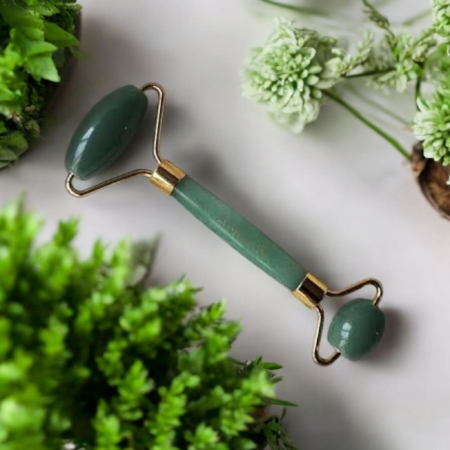Why Green Aventurine Stands Out
Green Aventurine is a beloved crystal known for its shimmering green color and connection to luck, prosperity, and emotional balance. But with so many fakes on the market—mostly dyed glass or quartz—it’s important to know how to tell the real from the fake.
Understand Its Unique Sparkle – Aventurescence
Real Green Aventurine Has a Subtle Glitter
The most unique trait of authentic Green Aventurine is its aventurescence—a natural, glittery sparkle caused by tiny mica or fuchsite inclusions. These sparkles are unevenly spread and shimmer subtly under light.
Avoid Uniform Shine
Fake versions often have an overly shiny, glass-like surface or sparkle uniformly like glitter. If it looks too perfect, it’s probably not real.
Inspect the Color and Texture
Genuine Aventurine Has a Soft, Natural Green
Real Green Aventurine comes in a variety of greens—from light mint to forest green. The color is typically soft, sometimes speckled, and never overly vibrant. Be cautious of neon greens or deep emerald hues, which are often dyed.
Natural Stones Show Variation
Each piece of real Aventurine will have its own pattern. You may spot streaks, speckles, or mica flecks. Dyed stones often have consistent color and lack texture.
Feel the Weight and Temperature
Real Aventurine Feels Heavy and Cold
Like most genuine crystals, Green Aventurine feels cool to the touch and denser than glass. Fakes warm up quickly and are usually lighter in weight.
Texture Should Feel Natural, Not Plastic-like
Even when polished, Aventurine has a slightly gritty texture due to its natural mineral structure. Fakes feel smooth like plastic or glass.
Test Under Light or Magnification
Use Light to Spot the Sparkle
Move the stone under a lamp or sunlight. Look for fine sparkles that shift as the light hits. If the sparkle doesn’t move or looks flat, it’s likely fake.
Use a Loupe or Magnifier
Under magnification, real Aventurine shows mineral grains and small inclusions. Glass fakes appear smooth, with possible air bubbles or no texture at all.
Check for Dye or Surface Coating
Rub the Stone with a Damp Cloth
Gently wipe the stone. If color transfers to the cloth, the stone is likely dyed. Real Aventurine holds its color.
Soak in Warm Water
Place the stone in warm (not hot) water for 15–20 minutes. If it starts to release color or smells odd, it’s been artificially treated.
Understand Its Source and Shape
Know Where It’s From
Most genuine Green Aventurine comes from India, Brazil, or Russia. If the seller can’t confirm the origin or avoids the question, be careful.
Natural Aventurine Comes in Many Forms
Real Aventurine can be carved, tumbled, or rough. Uniform shapes or unusually perfect beads might indicate synthetic materials.
Buy From Reputable Sellers Only
Request Authenticity Information
Ask for certification or details about sourcing. Good sellers are transparent and will gladly explain their products.
Avoid Too-Good-To-Be-True Prices
If the price is suspiciously low, it may be fake. Real Green Aventurine is affordable but not dirt cheap.
Common Imitations of Green Aventurine
Dyed Quartz or Glass
These are the most common fakes. Dyed quartz may look too bright or have blotchy colors. Glass versions are often too smooth and light.
Plastic Beads
Some extremely cheap jewelry uses plastic beads dyed to mimic Green Aventurine. These feel warm and very light—clear signs they’re fake.
Final Thoughts
Real Green Aventurine is easy to identify once you know what to look for—natural sparkle, soft green color, cool touch, and slight grainy feel. Trust your senses and be cautious of stones that look too shiny, too perfect, or unusually bright.
Use these tips next time you shop, and you’ll confidently choose the real deal every time.


